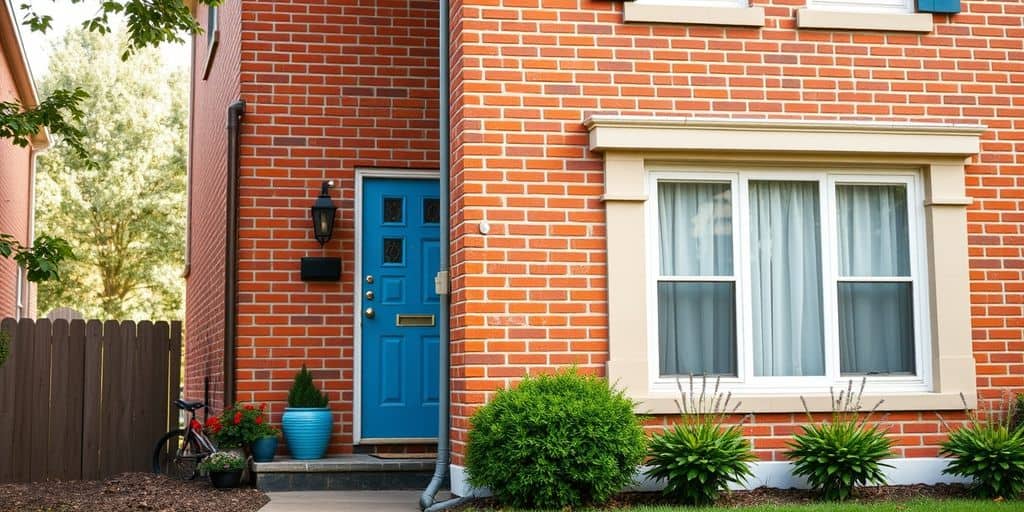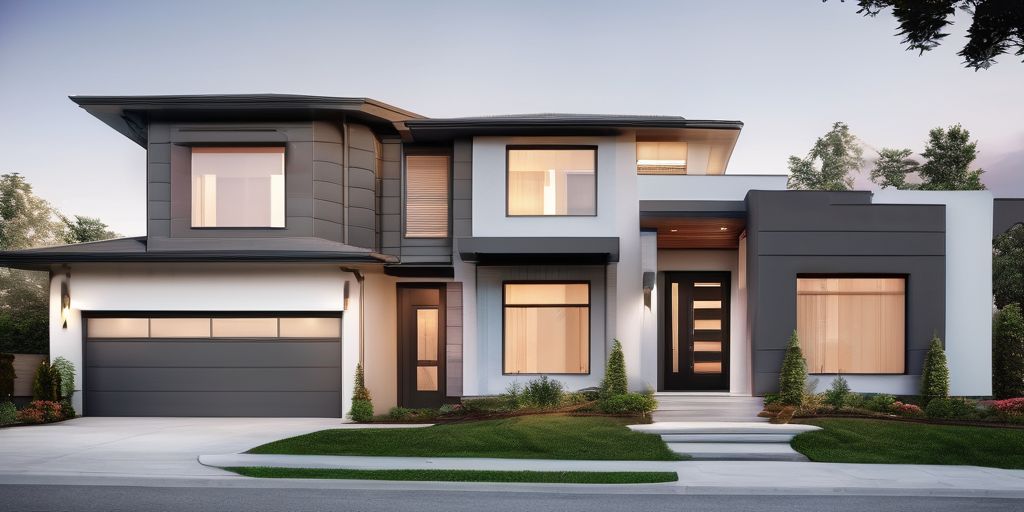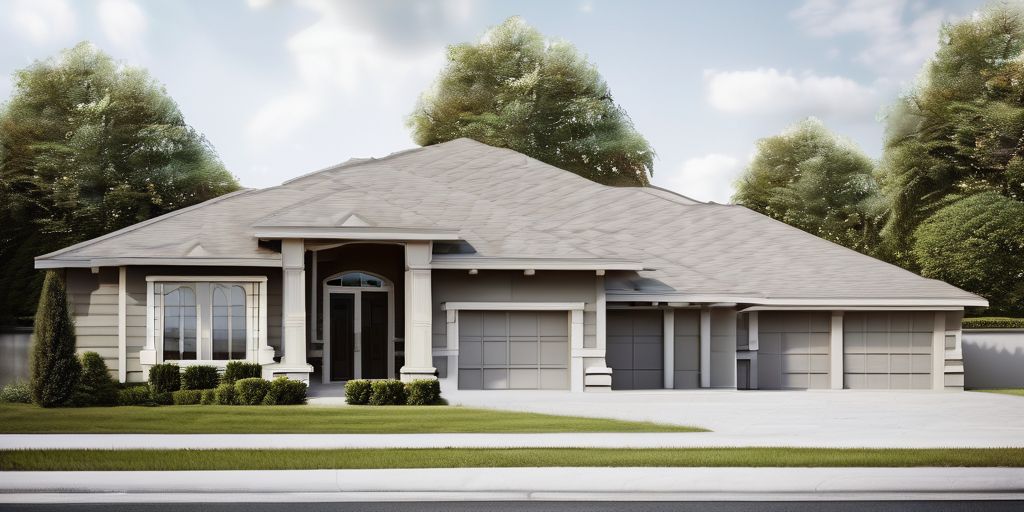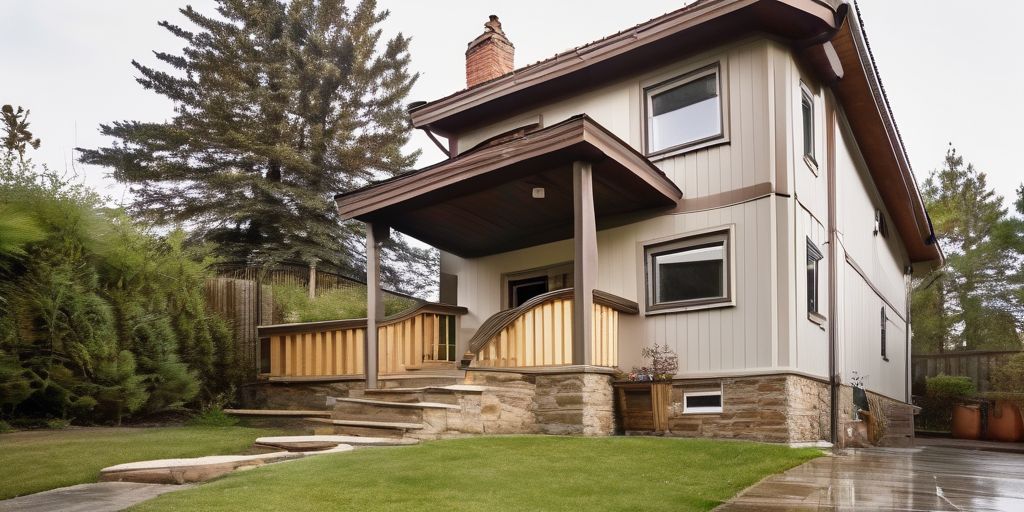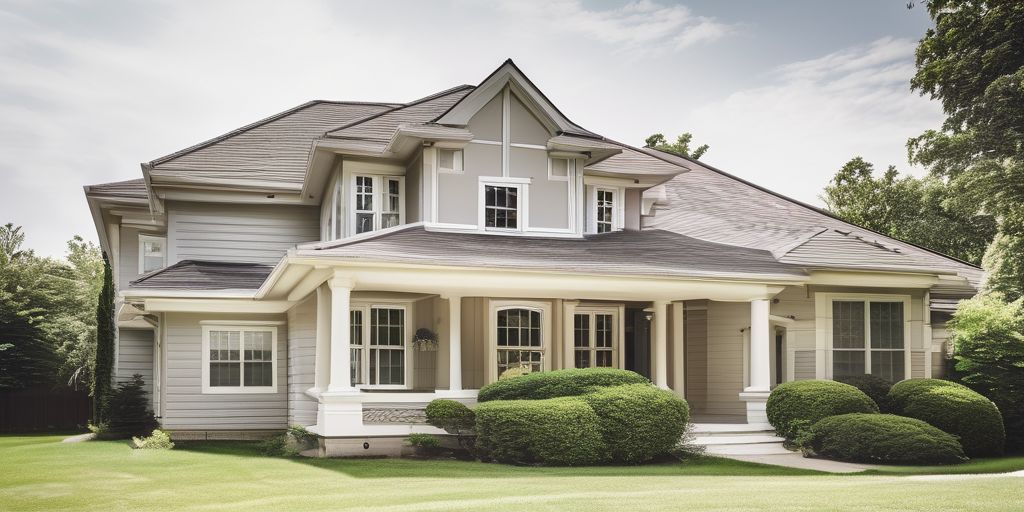Painting brick homes in Hamilton is a great way to refresh their look and protect them from the elements. However, one common issue homeowners face is color fading. This guide will help you understand the various factors that contribute to color fading and how to combat them effectively. From choosing the right paint to preparing your brick surfaces, we cover everything you need to know to keep your painted brick home looking vibrant for years to come.
Key Takeaways
- Understanding moisture issues is essential for the longevity of brick homes, especially in Hamilton’s varying climate.
- Selecting the right paint color involves considering sunlight, surroundings, and current trends.
- Eco-friendly paint choices, such as low or zero VOC paints, are better for the environment and your health.
- Proper preparation, including cleaning and priming, is crucial for a lasting paint job on your brick house.
- Knowing the optimal weather conditions for painting can significantly affect the outcome and durability of your project.
Understanding Moisture Challenges in Brick Homes
Moisture issues in brick homes can lead to significant damage if not addressed promptly. Recognizing the signs and taking preventive measures is essential for maintaining the integrity of your home.
Impact of Weather Extremes in Hamilton
Hamilton’s weather can be quite extreme, with hot summers and cold winters. These fluctuations can cause bricks to expand and contract, leading to cracks and moisture infiltration. Efflorescence, spalling, and mold are common indicators of moisture problems. Homeowners should be vigilant, especially during seasonal changes.
Routine Cleaning and Maintenance
Regular cleaning and maintenance are crucial to prevent moisture buildup. Here are some steps to follow:
- Clean the brick surface to remove dirt and prevent mold growth.
- Inspect for any signs of damage, such as cracks or deteriorated mortar joints.
- Repointing, or replacing old mortar, can help maintain the structural integrity of the brickwork.
- Ensure proper drainage around the foundation to prevent water accumulation.
Pressure Washing and Alternatives
Pressure washing can be an effective way to clean brick surfaces, but it must be done carefully to avoid damaging the bricks. Alternatives include using a soft brush and mild detergent. It’s important to allow the brick to dry thoroughly after cleaning to prevent moisture from getting trapped inside.
Proactive maintenance, such as regular inspections and sealing of brickwork, can prevent the progression of moisture damage. It’s advisable to consult professionals for significant issues, especially when dealing with heritage properties where preservation is key.
Selecting the Perfect Paint Color
Choosing the right paint color for your brick house in Hamilton can significantly impact its curb appeal and overall aesthetic. Here are some key considerations to help you make the best choice:
Eco-Friendly Paint Choices
Low or Zero VOC Paints
When choosing paint for your brick home, consider options with low or zero VOC (Volatile Organic Compounds). These paints reduce harmful emissions, making them safer for both the environment and your family. Low VOC paints are especially important in areas like Hamilton, where air quality can be a concern.
Natural and Recycled Materials
Opt for paints made from natural or recycled materials. These eco-friendly options not only minimize environmental impact but also often provide a unique, high-quality finish. Look for labels that indicate the use of sustainable ingredients.
Avoiding Harmful Chemicals
Ensure the paint you select is free from harmful chemicals and toxins. This is crucial for maintaining a healthy living space. Always check the ingredient list and opt for paints that prioritize safety and environmental responsibility.
By choosing eco-friendly paints, you not only protect the environment but also ensure a healthier living space for you and your family.
Selecting the right paint for your brick house in Hamilton involves balancing durability, UV resistance, and environmental considerations. With the right choice, you can ensure a beautiful and long-lasting finish that harmonizes with your surroundings.
Preparing Your Brick House for Painting
Cleaning and Repairing Brickwork
Properly preparing brick surfaces for painting is a multi-step process. Key steps include:
- Remove visible dirt, grime, or biological growth such as moss or algae.
- Address stains from atmospheric pollutants or bird droppings.
- Use gentle washing methods to avoid damage to the bricks.
- Ensure thorough drying of the brickwork before any painting begins.
Priming for Better Adhesion
- Clean the brick surface thoroughly to remove any dirt, debris, or old paint.
- Repair any cracks or damage to the bricks and mortar to prevent future deterioration.
- Apply a primer specifically designed for exterior brick to help the paint adhere and to block potential stains.
- Choose a paint that is labeled as UV-resistant to help prevent fading and degradation from the sun’s rays.
- Use a high-quality brush or roller designed for exterior surfaces, and apply the paint in thin, even coats.
When painting, it’s best to choose a day with temperatures ranging from 10-30°C and low humidity. Avoid painting in direct sunlight or windy conditions to prevent uneven drying.
Ensuring Thorough Drying
Ensuring the brickwork is completely dry before painting is crucial. Moisture trapped under the paint can cause peeling and other issues. Here are some tips:
- Allow sufficient drying time after cleaning the bricks.
- Check weather forecasts to avoid painting before rain or during high humidity.
- Consider using fans or dehumidifiers to speed up the drying process if necessary.
By following these steps, you can ensure a smooth and long-lasting paint job for your brick house. Proper preparation is key to achieving the best results.
Understanding Fading in Painted Brick Homes
The Science Behind Fading
Fading in painted brick homes happens due to several environmental and chemical factors. Sunlight is the main cause, with its ultraviolet (UV) rays breaking down the chemical bonds in paint, leading to a loss of color. This process, known as photodegradation, can change the look of your home over time.
Factors Affecting Fading
Several factors contribute to the fading of painted brick homes:
- Sun Exposure: UV rays break down paint pigments, causing color loss.
- Moisture: Rain, snow, and humidity can seep into the brick, affecting the paint’s adhesion and color.
- Temperature Fluctuations: Extreme heat and cold can cause the paint to expand and contract, leading to cracks and peeling.
- Quality of Paint: Higher quality paints with UV inhibitors and better adhesion properties can resist fading longer.
- Maintenance Practices: Regular cleaning and touch-ups can extend the life of the paint job.
While no paint can completely resist fading, certain formulations are designed to be more resilient against UV rays and weather conditions.
Preventing Fading
To keep the vibrant appearance of painted brick homes, it’s important to take steps to prevent fading. Here are some practical tips:
- Choose High-Quality Paint: Opt for paint specifically designed for exterior masonry to ensure better adhesion and resistance to weathering.
- Apply a Sealant: A clear sealant can provide an extra layer of protection against UV rays and moisture.
- Timely Touch-Ups: Address any signs of wear or damage promptly to prevent further degradation.
Additionally, consider the orientation of your home. Walls that face the sun for most of the day will fade more quickly and may need more frequent maintenance. By adopting a proactive approach, homeowners can significantly reduce the rate of fading and keep their homes looking fresh and inviting for years to come.
Optimal Weather Conditions for Painting Brick Houses
When painting your brick house, choosing the right weather conditions is crucial for achieving a long-lasting and even finish. Optimal weather conditions can make a significant difference in the outcome of your painting project.
Reviving the Charm of Painted Brick Homes
Choosing the Right Paint
Reviving the charm of painted brick homes starts with choosing the right paint. The longevity and vibrancy of the paint job depend on several factors:
- Quality: Opt for high-quality paint that offers good coverage and durability.
- Weather resistance: Paints that can withstand harsh weather conditions are essential, especially in areas with fluctuating temperatures.
- Color retention: Some paints are better at maintaining their color over time, resisting the effects of sunlight and moisture.
It’s important to consider the local climate when selecting paint, as this can greatly influence the performance and lifespan of the painted surface.
Additionally, homeowners should be aware of the different types of paint finishes available:
- Matte: Offers a non-reflective finish that hides surface imperfections.
- Satin: Provides a slight sheen and is easier to clean than matte finishes.
- Semi-gloss: Highly durable and great for areas that require frequent cleaning.
While the aesthetic appeal is a significant factor, it’s essential to balance it with practical considerations to ensure the paint not only looks good but also stands the test of time.
Maintaining Vibrancy
Maintaining the vibrancy of painted brick homes is crucial for preserving their aesthetic appeal over time. Here are some key steps to ensure that the colors of your home remain as vivid as the day they were first applied:
- Regular cleaning is essential to prevent dirt and pollutants from dulling the paint’s appearance.
- Apply a sealant to protect the paint from harsh weather conditions and UV rays.
- Touch up any areas where the paint has chipped or faded to maintain a consistent look.
- Consider the use of shades that are less prone to fading, such as lighter colors or those with UV-resistant pigments.
By adhering to these practices, homeowners can significantly extend the life of their paint job and keep their homes looking fresh and vibrant.
Professional vs. DIY Restoration
When it comes to restoring the charm of painted brick homes, homeowners often face the choice between professional and DIY restoration. Each approach has its pros and cons:
Professional Restoration
- Pros:
- Expertise in handling various brick conditions.
- Access to high-quality materials and tools.
- Time-efficient and often more durable results.
- Cons:
- Higher cost compared to DIY.
- Less personal involvement in the project.
DIY Restoration
- Pros:
- Cost-effective.
- Personal satisfaction from completing the project.
- Flexibility to work at your own pace.
- Cons:
- Requires significant time and effort.
- Potential for mistakes that could affect the longevity of the paint job.
In Hamilton, where historical architecture is cherished, a color that harmonizes with the local environment, such as the warm hues found in the limestone of the iconic Dundurn Castle, can be particularly striking.
Painted brick homes are making a comeback, adding a fresh and charming look to neighborhoods. If you’re thinking about giving your home a new look, now is the perfect time. Visit our website to see how we can help you transform your home with our expert painting services.
Conclusion
In conclusion, keeping the paint on your brick home in Hamilton looking fresh and vibrant involves a mix of good choices and regular care. By picking the right paint that can handle Hamilton’s weather, and by doing regular maintenance, you can keep your home looking great for a long time. Remember to clean your bricks, fix any damage, and use a good primer before painting. Also, think about how the sun and weather will affect your paint color over time. With these tips, your brick home can stay beautiful and charming for years to come. Happy painting!
Frequently Asked Questions
What causes paint on brick homes to fade?
Paint on brick homes can fade due to sunlight, weather conditions, and the quality of the paint used. UV rays from the sun break down paint, leading to color loss.
How can I prevent my painted brick home from fading?
To prevent fading, use high-quality, UV-resistant paint and apply protective coatings. Regular maintenance and touch-ups also help keep the color vibrant.
How often should I repaint my brick home to keep it looking fresh?
The need for repainting depends on factors like climate, sun exposure, and paint quality. Typically, brick homes might need repainting every 5-10 years.
Are there eco-friendly paint options for brick homes?
Yes, there are eco-friendly paints with low or zero VOCs, made from natural or recycled materials, and free from harmful chemicals.
What is the best weather for painting a brick house?
The best weather for painting is when temperatures are between 50°F and 77°F, with low humidity and no rain. This ensures the paint adheres well and dries properly.
Should I hire a professional or can I paint my brick house myself?
While DIY painting is possible, hiring a professional can ensure better results and longevity, especially if the brickwork needs repair or special treatment.

